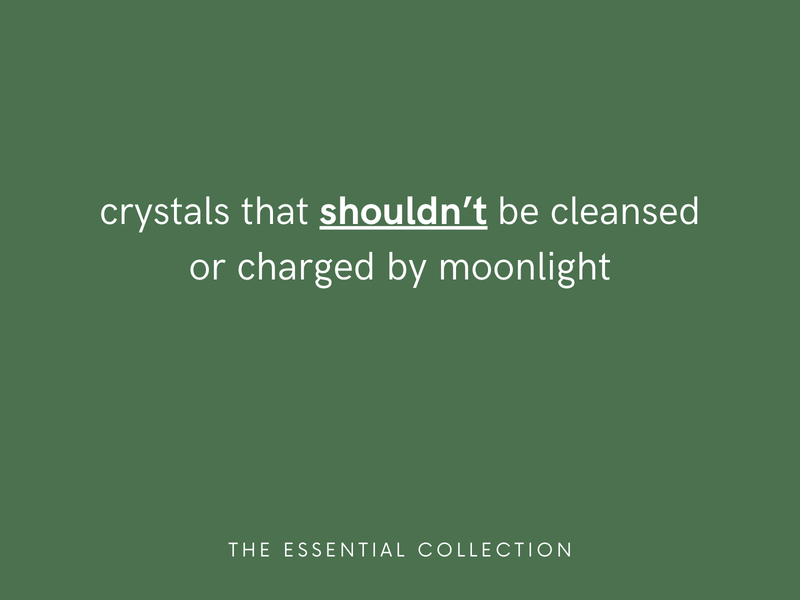Crystal Rituals for Every Moon Phase | Digital Guidebook
- Regular
- $4.99
- Sale
- $4.99
- Regular
- Unit Price
- per
FREE SHIPPING FOR AUSTRALIAN ORDERS OVER $80
SHOP NOW & PAY LATER WITH AFTERPAY


Crystals have captivated humanity for centuries, believed to possess unique energies and healing properties. Among the various methods to cleanse and charge crystals, moonlight is often considered a powerful and natural technique. However, not all crystals are compatible with this method. In fact, some crystals may be harmed or altered if exposed to moonlight. Let's delve into this intriguing aspect of crystal care and explore which crystals should avoid this celestial cleansing.
Moonlight cleansing is a popular practice among crystal enthusiasts. It involves placing crystals outside or in a windowsill during a full moon to allow them to absorb the moon's energy. This process is believed to cleanse the crystals of any accumulated negative energies and recharge their natural vibrational frequencies, enhancing their effectiveness for spiritual and healing purposes.
While moonlight cleansing is beneficial for many crystals, there are certain types that can be negatively affected by exposure to lunar energy. These crystals may be too delicate, prone to fading, or contain elements that react adversely to sunlight or moonlight.
Here are four crystals that are not recommend for moonlight cleansing and charging.
Selenite is a delicate crystal known for its ethereal beauty and high vibration. However, it is extremely sensitive to moisture and light, including moonlight. Exposing selenite to prolonged sunlight or moonlight can cause it to deteriorate, become brittle, or even dissolve over time. Instead of moonlight, selenite can be cleansed and charged using other methods such as sound vibrations or placing it on a piece of selenite itself.
Fluorite is a colorful and translucent crystal prized for its calming energy and ability to enhance mental clarity. However, prolonged exposure to sunlight or moonlight can cause its vibrant hues to fade or become dull. To maintain its beauty and energetic properties, it's best to cleanse fluorite using gentle methods such as smudging or placing it on a bed of sea salt.
Opal is a stunning gemstone renowned for its iridescent play of colors. However, opals are sensitive to changes in temperature and light, including moonlight. Exposing opal to intense light sources can cause it to lose its luster or develop cracks. To cleanse opal, opt for gentle methods like using purified water or placing it near a piece of clear quartz overnight.
Malachite is a striking green stone prized for its transformative and protective properties. However, it contains copper, which can oxidize when exposed to moisture or light. Prolonged exposure to moonlight can cause malachite to darken or develop a patina. Instead, cleanse malachite using dry methods like visualization or sound therapy.
For crystals that shouldn't be cleansed or charged by moonlight, there are plenty of alternative methods available:
While moonlight cleansing is a popular and effective method for many crystals, it's important to recognize that not all crystals are suited to this practice. Crystals such as selenite, fluorite, opal, and malachite require gentler cleansing methods to preserve their beauty and energetic properties. By understanding the unique characteristics of each crystal and choosing appropriate cleansing techniques, we can ensure that our crystals remain vibrant and energetically aligned for optimal healing and spiritual growth.
If you are looking to dive deeper into Cleansing and Charging Crystals check out our guidebook, Cleansing and Charging Crystals.